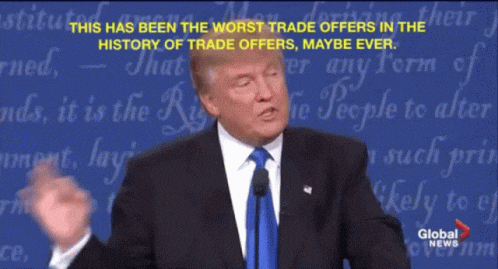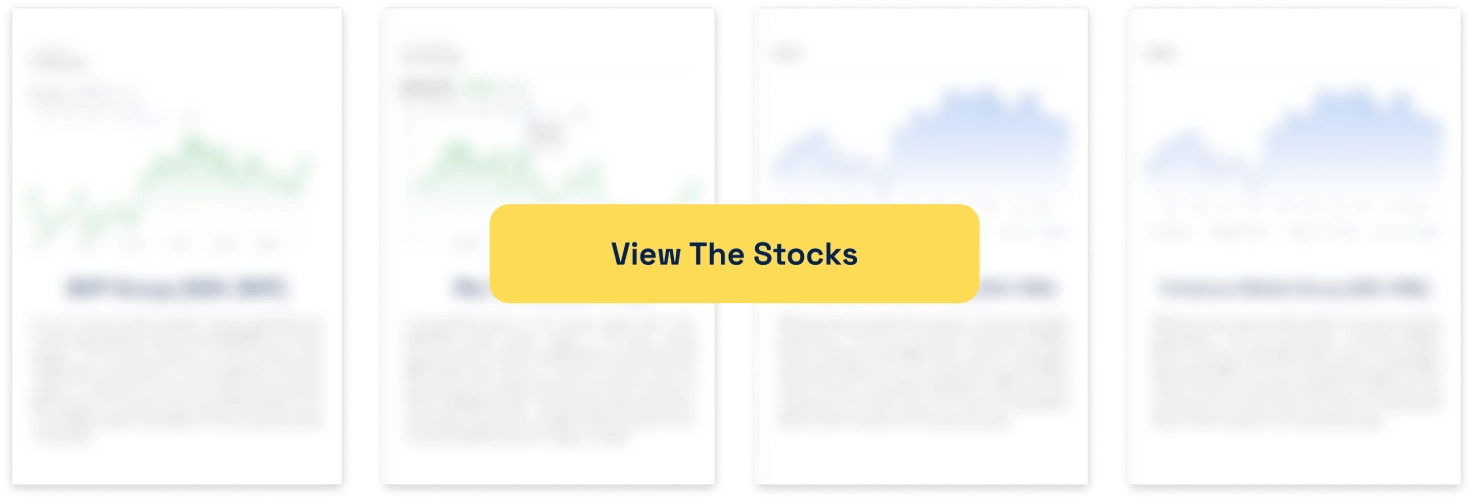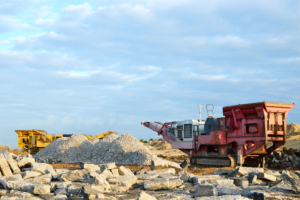How Trump’s Proposed 200% Tariffs Could Hit CSL (ASX:CSL) and Other Aussie Biotechs

Donald Trump’s Tariffs Could Hit CSL and other Aussie Biotechs…it is a reality that is sinking in for many investors. One of the US President’s latest proposals — a 200% tariff on imported pharmaceuticals — has sent shockwaves through the healthcare sector. And yes, that includes close allies like Australia.
For investors in CSL (ASX: CSL) and the broader biotech space, this isn’t just political noise; it’s a real warning sign that could disrupt earnings and market confidence.
CSL, one of Australia’s most valuable companies, relies heavily on the U.S. for revenue, especially from its plasma therapies and flu vaccines. If these tariffs go ahead, CSL could face higher costs, squeezed margins, and renewed volatility in its share price.
So, what’s at risk here? The future of one of Australia’s strongest export success stories. And we’re not exaggerating. Let’s unpack what Trump’s tariff threat means for CSL, Australian pharmaceutical exports, and the biotech sector as a whole.
Trumps Tariffs Could Hit CSL: So Here’s What You Need to Know
Just when markets thought they’d seen it all, Donald Trump introduced a new wildcard: a proposed 200% tariff on imported pharmaceuticals. And this time, he’s not only going after traditional rivals like China — he’s targeting U.S. allies, including Australia, Canada, and parts of Europe.
So, what’s behind this move?
Trump argues that the U.S. pharmaceutical industry, home to many of the world’s largest drugmakers, has been unfairly subsidising global healthcare. In his view, countries like Australia benefit from American-led innovation in drug development but pay far less for the final products due to government pricing schemes such as the Pharmaceutical Benefits Scheme (PBS).

“We develop the drugs, we save lives, and then other countries buy them for a fraction of the cost. That’s going to change,” Trump said at a campaign rally in June 2024, according to Politico.
Unlike previous trade spats over steel or electronics, this one cuts closer to the bone. It targets essential medicines and global health supply chains. The proposed tariff would be broad in scope — applying to everything from vaccines and plasma therapies to over-the-counter medications.
For investors, the immediate concern is the breadth of the policy. The tariff could apply to any pharmaceutical product entering the U.S., including generic antibiotics, complex biologics, and plasma-derived therapies — many of which are produced by CSL and other Australian firms.
How the Tariff Threatens Australian Pharma Exports
Australia may not be the first country that comes to mind in global pharmaceutical trade, but its role is significant, particularly in plasma therapies and influenza vaccines. That’s where the proposed 200% U.S. tariff could cause real damage.
Companies like CSL, through its subsidiaries CSL Behring and Seqirus, contribute a large share of Australia’s pharmaceutical exports. These aren’t generic pills. They’re high-value, specialised products. CSL’s plasma-derived therapies treat rare and life-threatening conditions, while Seqirus is one of the world’s largest suppliers of seasonal flu vaccines. A substantial portion of both product lines is shipped directly to the U.S., a market that offers both scale and premium reimbursement. According to TradeMap data, Australia exported over A$2–2.8 billion in pharmaceutical products globally in 2023, with the U.S. being a major destination. This isn’t a niche trade line — it’s a strategically important export category.
Unlike products like steel or wine, medicines aren’t warehoused for months waiting out tariffs. They’re part of tightly managed, temperature-sensitive supply chains. Any disruption doesn’t just hurt margins — it affects delivery timelines, regulatory approvals, and ultimately, patient access.
This places CSL and Australia’s broader pharmaceutical sector in a more vulnerable position than in any previous U.S. trade dispute. And because the affected products are health-related, the stakes are even higher.
CSL’s Exposure to the U.S. Market
When it comes to global revenue, CSL is not just participating in the U.S. market — it’s deeply embedded. Its two main divisions, CSL Behring and Seqirus, generate a large portion of their income from the United States. While this exposure is usually a strength, it now raises significant concerns given Trump’s proposed pharmaceutical tariffs.
Revenue Dependence on the U.S.
CSL’s 2024 half-year results show how heavily its growth depends on North American operations. The region contributes around 47% of total group revenue, making it CSL’s single largest market by a wide margin. This includes sales of plasma-derived therapies, specialty biologics, and flu vaccines.
CSL Behring, which focuses on treating conditions such as haemophilia and immune deficiencies, generates most of its revenue through U.S.-based plasma collections and therapy distribution. Meanwhile, Seqirus sells heavily into the U.S. public and private sectors during the Northern Hemisphere’s flu season.
Put simply, CSL’s growth is tied closely to its U.S. presence. Any policy change affecting trade with the U.S. will impact its top line.
Impact on Plasma, Vaccines, and Margins
The issue isn’t just access to the market — it’s profitability under threat.
CSL’s plasma therapies and flu vaccines operate on tight margins and high volumes, so even small cost increases can have an outsized effect. A 200% tariff doesn’t merely disrupt pricing — it puts CSL in a difficult position. Either pass on the costs to U.S. buyers (risking lost market share) or absorb them internally (damaging margins).
It’s a tough trade-off. CSL’s operations are capital-intensive — from global plasma collection networks to regulated vaccine manufacturing — so quick cost savings aren’t feasible without compromising output or quality.
The U.S. has been a stable and lucrative market for CSL. But with this tariff threat, that stability could quickly turn into a pressure point. If enacted, investors should expect potential revisions to margin guidance and possibly a broader rethink of CSL’s U.S. strategy.
Understanding the PBS and Why It’s a Flashpoint
Trump’s criticism also targets Australia’s Pharmaceutical Benefits Scheme (PBS) — a long-standing government program that subsidises prescription drug costs.
The PBS ensures affordable access to essential medicines through price negotiations between the Australian Government and pharmaceutical companies. Under this model, drug prices in Australia are often far lower than in the U.S.
From Trump’s standpoint, this is unfair. He argues that countries like Australia are underpaying for medicines developed with American investment, thereby shifting the financial burden back onto U.S. taxpayers. During his campaign, he accused Australia of “free-riding” on U.S. innovation — a message that resonates politically, even if it simplifies the underlying economics.
Importantly, both major Australian political parties strongly support the PBS. There’s little interest in revising the scheme, especially regarding pricing. That leaves Canberra in a difficult position: holding firm could invite further trade retaliation, while making concessions could lead to domestic political backlash.
As long as the PBS remains untouched, Australia will likely stay in Trump’s crosshairs — and CSL may be caught in the middle.
Timeline – When Could the Pharma Tariffs Begin?
As of mid-2025, Trump’s proposed 200% drug tariffs remain unimplemented. Despite heavy campaign rhetoric in 2024 and transition-period talk, no formal policy has taken effect yet. An expected August 2024 rollout came and went without action, largely due to lobbying and election timing.
Now that Trump has returned to the White House, attention has shifted to whether action might come in Q3 or Q4 2025. Policy analysts suggest that a potential Executive Order or phased introduction could occur in the second half of the year, especially if pressure from U.S. domestic pharma lobbies builds.
This timeline matters for CSL and other exporters. Pharma products like plasma therapies and vaccines require long manufacturing and logistics lead times, meaning a sudden tariff could cause major disruption. CSL is likely advocating behind the scenes via industry groups to gain clarity before issuing its FY25 earnings guidance.
In the meantime, uncertainty around the policy could fuel volatility in CSL’s valuation — not because of operational issues, but due to geopolitical risks that markets will struggle to price.
How Could This Affect CSL and the ASX Biotech Sector?
If these tariffs are enacted, the consequences won’t end with CSL. The ripple effect could spread across the ASX biotech space, rattling investor confidence — even for companies not directly affected.
CSL Share Price Volatility
CSL has a track record of reacting sharply to changes in US policy, and this time is unlikely to be any different. Even the whiff of a formal announcement, a press conference, an emerging report, or an updated trade stance could spark market jitters.
We’ve seen this before. Back in 2021, when US regulators tightened reimbursement policies for plasma therapies, CSL’s stock fell almost 8% in just two weeks. The message was clear: when the US market moves, so does CSL.
This time, with tariffs potentially hitting core product lines like plasma and flu vaccines, investors should be watching for any adjustments to forward guidance or margin outlooks. Expect the stock to swing on headlines, particularly around earnings season or US trade briefings.
Broader Biotech Sentiment
Even companies outside the direct line of fire could feel the heat. Cochlear (ASX: COH) and ResMed (ASX: RMD), both of which rely heavily on US revenue, may come under pressure if global investors start pulling back from Aussie healthcare stocks on broader trade concerns.
And then there’s the currency factor. Trade tensions tend to strengthen the US dollar, which could push the Aussie lower. While that might look like a win for exporters, a falling AUD also signals risk-off sentiment, not exactly what the biotech sector wants right now. This isn’t just a CSL issue. It’s a warning sign for the whole sector, and one that investors would be wise to track closely.
Investor Outlook – What to Watch Now
So what should investors be tracking?
Official US trade announcements: Monitor White House press releases, USTR notices, and campaign pledges as they evolve.
CSL quarterly results and guidance: These will reveal how the company is positioning itself for potential margin pressure or regulatory shifts.
Australian Government’s stance on the PBS: A hard-liner defense of the scheme will raise the likelihood of a policy clash.
Global biotech sector performance: Keep an eye on US-listed biotech indices like the NASDAQ Biotechnology Index (NBI) to gauge broader sentiment.
The next 6 to 12 months will be pivotal. Investors should stay informed, nimble, and wary of headline-driven swings, especially as CSL approaches its full-year earnings release in August.
Conclusion – Tariff Uncertainty Could Disrupt CSL’s Global Strategy
For CSL and its investors, the threat of a proposed 200% drug tariff is a real and growing risk that could reshape how the company does business in its most important market.
In the short term, the biggest concern is margin pressure. Plasma therapies and vaccines are already cost-sensitive, and absorbing a tariff hit, or passing it on to buyers, could dent both earnings and market share. On top of that, CSL’s share price is likely to remain vulnerable to headlines, especially if forward guidance comes under revision.
Looking further ahead, the challenge becomes strategic. If trade tensions between the US and Australia escalate, particularly over pharmaceutical pricing, CSL may need to rethink its supply chains, pricing models, or even regulatory strategies for the US market.
And in the long term? There’s a broader risk to Australia-US Frelations, which have historically been stable. Any policy shift that undermines that dynamic could have lasting consequences for CSL and other Australian drug exporters.
How this unfolds will depend heavily on CSL’s lobbying efforts, trade negotiations, and whether the Australian Government takes a firmer stand on defending the PBS. For now, investors would do well to stay alert because this story is far from over.
What are the Best ASX Stocks to invest in right now?
Check our buy/sell tips
FAQs
- What is the proposed 200% drug tariff, and how could it affect CSL?
Donald Trump has proposed a 200% tariff on imported pharmaceuticals, including drugs from allied countries like Australia. If implemented, CSL’s plasma therapies and vaccines, a significant portion of its US revenue could become uncompetitive, pressuring margins and forcing strategic shifts.
- Why is CSL particularly exposed to this policy risk?
Nearly 47% of CSL’s total revenue comes from North America, with the US market playing a central role in both plasma collections and therapy distribution. Its reliance on high-volume, margin-sensitive products makes any new tariff a potential hit to profitability.
- Could other ASX biotech stocks be affected too?
Yes. While CSL is most directly in the firing line, companies like Cochlear and ResMed, which also earn substantial revenue from the US, may face indirect pressure from broader investor sentiment and trade-related volatility.
- How does Australia’s PBS factor into this trade risk?
The Pharmaceutical Benefits Scheme (PBS) keeps drug prices low in Australia, a system Trump sees as undercutting US pharmaceutical innovation. Because Australia isn’t likely to reform PBS pricing, it may remain a target in future US trade actions.
- What should investors be watching in the months ahead?
Keep a close eye on official US trade policy announcements, CSL’s quarterly earnings guidance, the Australian Government’s position on the PBS, and overall biotech market sentiment. These will be key indicators of how serious and immediate the tariff threat really is.
Blog Categories
Get Our Top 5 ASX Stocks for FY26
Recent Posts
Develop Global Wins $200m OceanaGold Contract- What It Means for Investors
Develop Global (ASX: DVP) climbed 4% to A$4.36 on Friday after securing a A$200 million underground development contract with global…
Nova Minerals Drops 14% on $20m Capital Raise- Buy or Avoid?
Nova Minerals (ASX: NVA) dropped nearly 14 per cent to A$0.90 following the announcement of a US$20 million (approximately AUD…
WiseTech (ASX:WTC) Rises After Richard White Cleared of Misconduct – Should You Buy the Dip?
WiseTech Global (ASX: WTC) climbed 3 per cent to A$70.18 on Friday after founder and Executive Chairman Richard White was…



